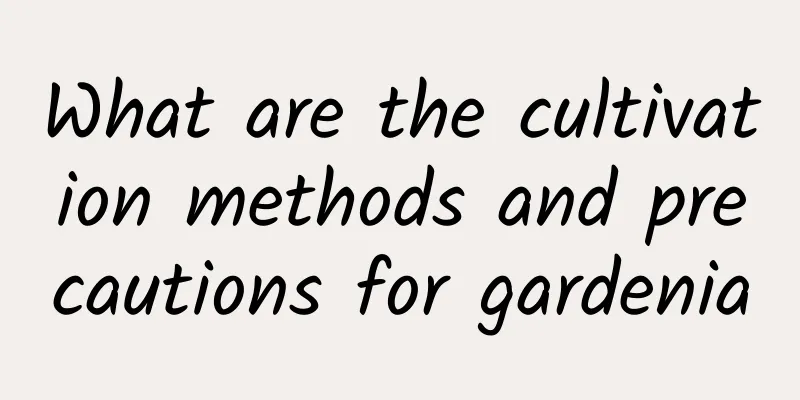What are the cultivation methods and precautions for gardenia

Gardenia cultivation methodGardenia is a plant of the genus Gardenia in the Rubiaceae family. It has high ornamental value and is mainly propagated by cuttings and layering. It likes an environment with plenty of sunlight. Its leaves are dark green in a semi-shady environment, but its flowering is slightly worse. It likes a warm environment and can tolerate temperatures as low as minus 3 degrees Celsius. It has strong tillering and budding abilities. Gardenia prefers fertile, loose, well-drained, acidic light clay loam, with a pH value between 4.0 and 6.5. It is resistant to drought and barrenness. When choosing soil for gardenia, it is best to choose slightly acidic soil for cultivation. Watering methodGardenia likes a humid environment and has a high demand for water and air humidity. It needs to be watered frequently during the growth period. You can spray water appropriately to increase the humidity of the air. The amount of watering each time should not be excessive, especially in winter. Watering should be controlled to prevent root rot. Fertilization methodGardenia is a plant that likes fertilizer. In order to meet the fertilizer needs of gardenia during its growth period, during the vigorous growth period, you can apply fertilizers such as bean cake, sesame paste residue, peanut bran, etc. once every 15 days to promote flowering. Pruning methodsIf gardenia is not pruned during its growth period, it will cause overlapping of branches and leaves, poor light transmittance and ventilation. It is necessary to thin out the branches and leaves in time, which can also promote growth and cut off other branches that sprout from root suckers. Precautions for gardenia cultivation1. Potting soil: Gardenia prefers loose, fertile, well-drained acidic soil with a pH value between 5-6. It cannot be planted in heavy, compacted soil. 2. Fertilization: During the growth period of gardenia, water it once every 7 days, and apply phosphorus and potassium fertilizers 1-2 times during the budding period. Stop fertilizing when the temperature is above 35 degrees or below 15 degrees. 3. Watering: Gardenia likes moisture, so the soil in the pot should be kept moist during the growth period. If the temperature is high, you can spray the leaves to wet them, and control watering when the temperature is low. 4. Light: The maintenance environment of gardenia needs sufficient light, but the midday sun in July and August needs to be shaded. It can be kept in the sun at other times. |
<<: What are the cultivation methods and precautions of kidney bean trees?
>>: Is pepper a fruit or a vegetable?
Recommend
When to plant strawberries
1. Planting time The best time to plant strawberr...
Can jackfruit be grown in the north?
Can jackfruit be grown in the north? Jackfruit ca...
What is the reason for gardenia buds to drop?
1. Excessive watering 1. Reason: If you water it ...
When is the best time to plant gourd seeds?
Gourd seed planting time The small gourd is an an...
The best season to prune bougainvillea
There are many varieties of bougainvillea , and t...
How long is the growing season for spring corn?
How long is the growing season for spring corn? T...
Does hibiscus need a large pot or a small pot? What size pot is appropriate?
When you first start planting hibiscus, you will ...
How to plant and care for lilies
Growth environment Growth habit Lily is a cool-lo...
How to propagate Hawaiian coconut
Division propagation The underground stems of Haw...
Does the toilet always have a bad smell? don’t worry! 10 plants to instantly freshen the air
MicrosoftInternetExplorer402DocumentNotSpecified7....
What to do if the leaves of Daphne koreana turn yellow
1. Temperature changes Reason: If the living envi...
Cultivation methods and precautions of purple clover How to grow purple clover
Purple clover is very easy to grow and is suitabl...
Can honeycomb coal be used as flower soil?
Can honeycomb coal be used as flower soil? Honeyc...
Preparation method of money tree flower soil
Money tree soil requirements The money tree prefe...
How to grow the red flower jade to make it bloom more
The red flower jade does not bloom There are actu...









